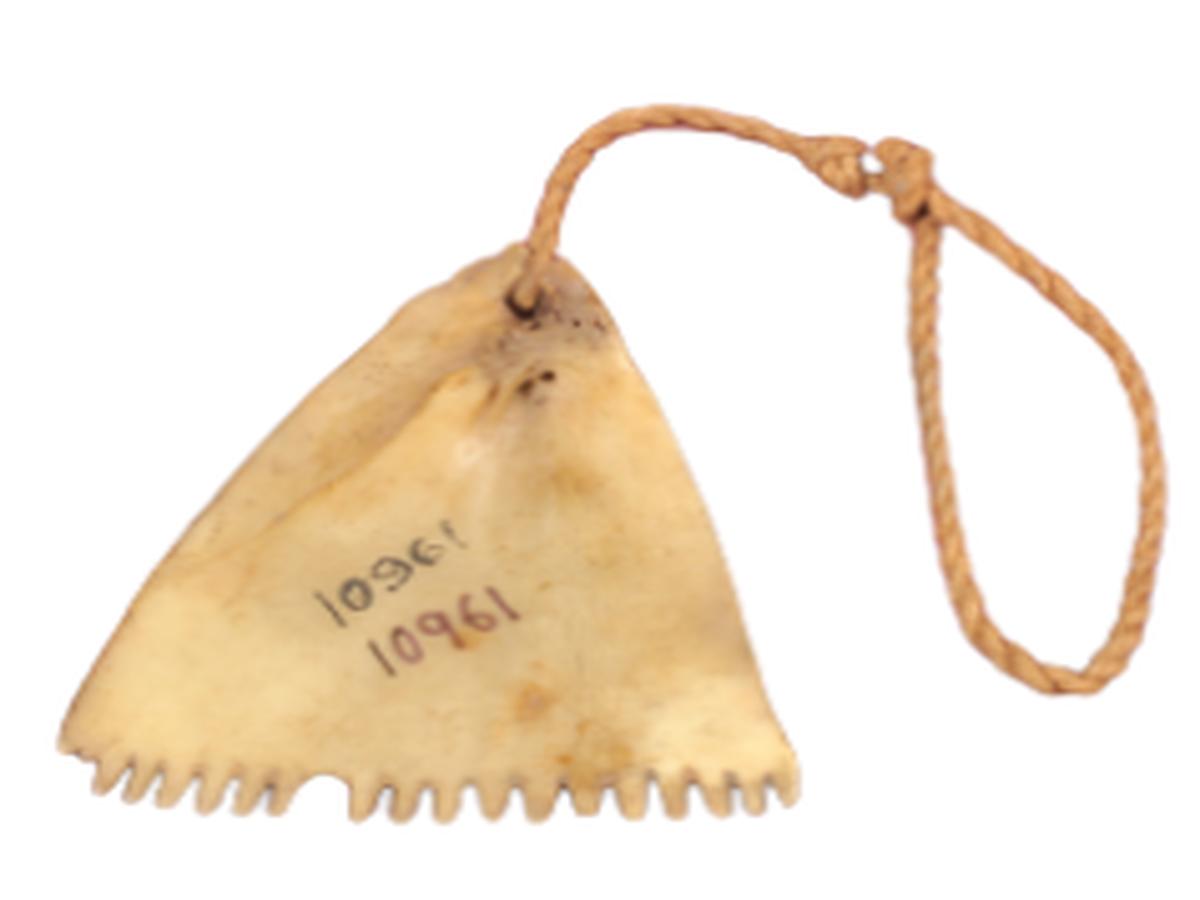State
Tribe Name
Art Type
short description
The magnificent triangular fishbone comb belonging to the Abor tribe can be ranked among the most fascinating grooming implements of India's indigenous communities. Abors, an ethnic group of Arunachal Pradesh, are said to have resourcefully used the elements of nature to manufacture tools for daily use, and this comb stands as a testimony to their creative ingenuity and environmentally cautious way of life. Uniquely fashioned out of fishbone into a triangular day with a finely serrated anterior edge resembling teeth that work as the active end of the comb. The straight serration on the other hand was meant for detangling and chiefly refining hair; hence the straight serrations are effective for grooming purposes on coarse hair found among tribal constituencies. On the other end is a small circular perforation, likely meant for hanging or securing the comb to a cord-hairpiece when not in use.
Thumbnail

Filter Postion
Left
Filter Background
Off
Theme
Filter Header Image

content
Image

description
The magnificent triangular fishbone comb belonging to the Abor tribe can be ranked among the most fascinating grooming implements of India's indigenous communities. Abors, an ethnic group of Arunachal Pradesh, are said to have resourcefully used the elements of nature to manufacture tools for daily use, and this comb stands as a testimony to their creative ingenuity and environmentally cautious way of life. Uniquely fashioned out of fishbone into a triangular day with a finely serrated anterior edge resembling teeth that work as the active end of the comb. The straight serration on the other hand was meant for detangling and chiefly refining hair; hence the straight serrations are effective for grooming purposes on coarse hair found among tribal constituencies. On the other end is a small circular perforation, likely meant for hanging or securing the comb to a cord-hairpiece when not in use.
One surface is smooth while one side has engraved lines that were purely ornamental or perhaps symbolic. This dual-sidedness adds its share of allure but also indicates the Abors' zest for minute details and cultural symbolism even in their ordinary articles. The fact that fishbone qualifies to be a local material from the habitat demonstrates a certain degree of the interdependence of the tribe and that environment. In fact, items like this comb are often produced by tribal artisans as part of a tradition that lived and evolved over time through an oral and practice-sharing tradition from one generation to the next.
One surface is smooth while one side has engraved lines that were purely ornamental or perhaps symbolic. This dual-sidedness adds its share of allure but also indicates the Abors' zest for minute details and cultural symbolism even in their ordinary articles. The fact that fishbone qualifies to be a local material from the habitat demonstrates a certain degree of the interdependence of the tribe and that environment. In fact, items like this comb are often produced by tribal artisans as part of a tradition that lived and evolved over time through an oral and practice-sharing tradition from one generation to the next.
Image Mode
landscape
promoted
On
Verified
Off
